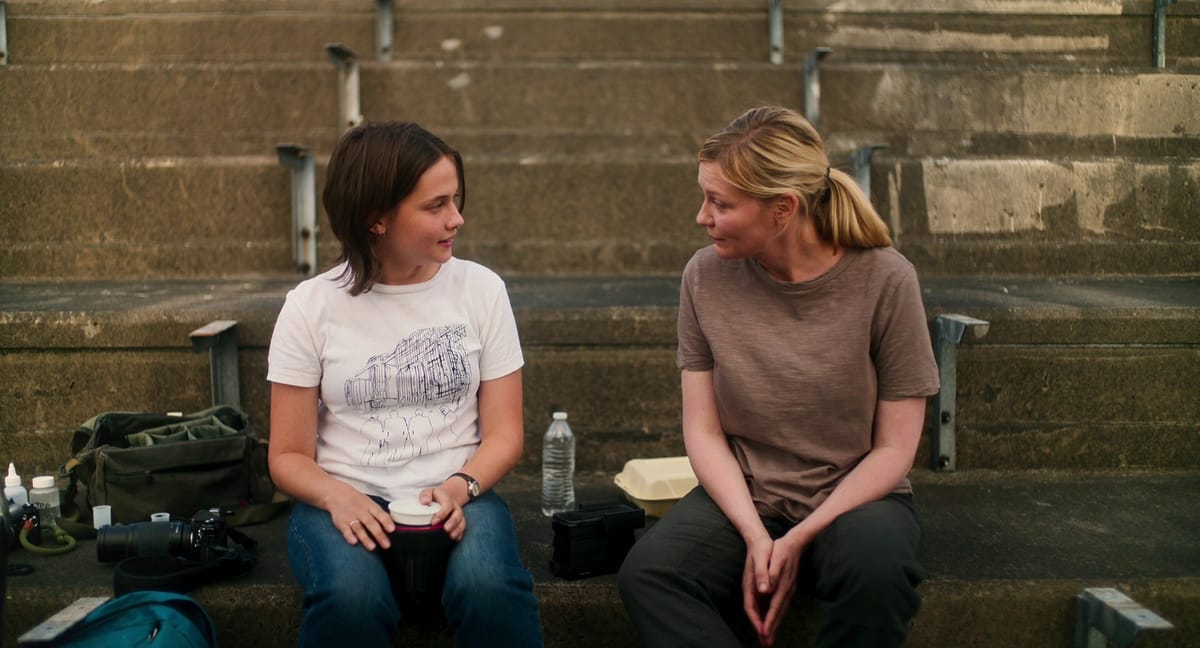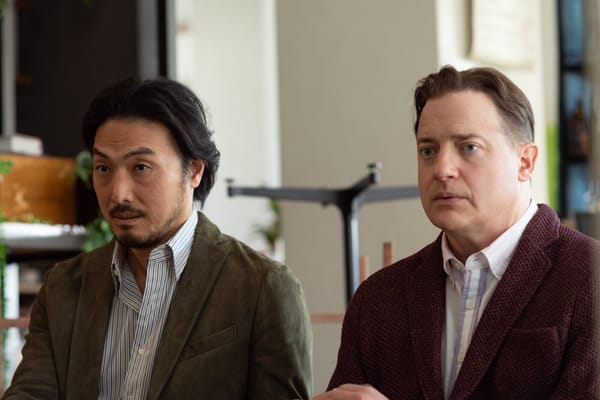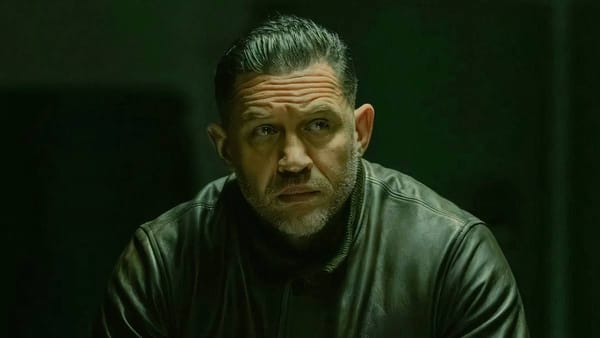The cost of documenting a dying state.

CIVIL WAR is a film that stares straight into the American psyche and refuses to blink. Alex Garland doesn’t make a prediction or a warning so much as a diagnosis — a portrait of a country so fractured that the line between journalism and survival collapses. What emerges is less a war movie than a road movie through a nation already dead on its feet, where every town has its own rules, every checkpoint its own morality, and every silence feels like an aftershock.
Garland structures the film around four journalists moving toward Washington, D.C., not to save it, but to document its fall. Kirsten Dunst’s Lee is the film’s gravitational center: drained, resolute, and brutally honest about what bearing witness has cost her. Dunst plays her like someone hollowed out by years of photographing suffering — a person who believes in truth, but no longer believes truth is enough. Her stillness becomes its own kind of devastation.
Cailee Spaeny’s Jessie, meanwhile, is the ghost of Lee’s past — young, ambitious, and still clinging to the belief that journalism matters. Their generational tension gives the film its emotional spine. Garland doesn’t romanticize the press; he shows them as people who run toward chaos for reasons that are sometimes noble, sometimes selfish, sometimes self-destructive. But he never treats the camera as neutral. Every image is a choice. Every choice has consequences.
The action is immediate and unnervingly matter-of-fact. Garland isn’t interested in spectacle — he’s interested in how quickly violence becomes normal when institutions fail. A sniper’s bullet isn’t framed for shock; it’s framed the way reporters would see it: sudden, directionless, unavoidable. The film’s most harrowing sequence — a roadside encounter led by a soldier played with chilling banality by Jesse Plemons — distills the entire thesis into one question delivered with dead-eyed calm: “What kind of American are you?” It’s not a threat. It’s a worldview.
Visually, CIVIL WAR feels like journalism turned into nightmare. Calm landscapes hide conflict just out of frame. Cities are abandoned, not destroyed. The war we see is less about front lines and more about the spaces between them — little pockets of violence, desperation, and refusal. Garland understands that the most frightening thing about a modern civil war isn’t the battles, but the vacuum of authority that lets cruelty flourish unchecked.
By the time the film reaches its final act — the assault on Washington, staged with terrifying clarity — CIVIL WAR becomes a meditation on what it means to bear witness when the world around you has already stopped listening. There is no triumphant closing note, no moral certainty. Just the question of what a photographer captures when the country they’re photographing no longer knows itself.
It is Garland’s most urgent film: unsettling, restrained, and terrifying precisely because it never exaggerates. It shows a nation fractured, and the people who document its fall because someone has to, even if the truth comes too late to matter.




